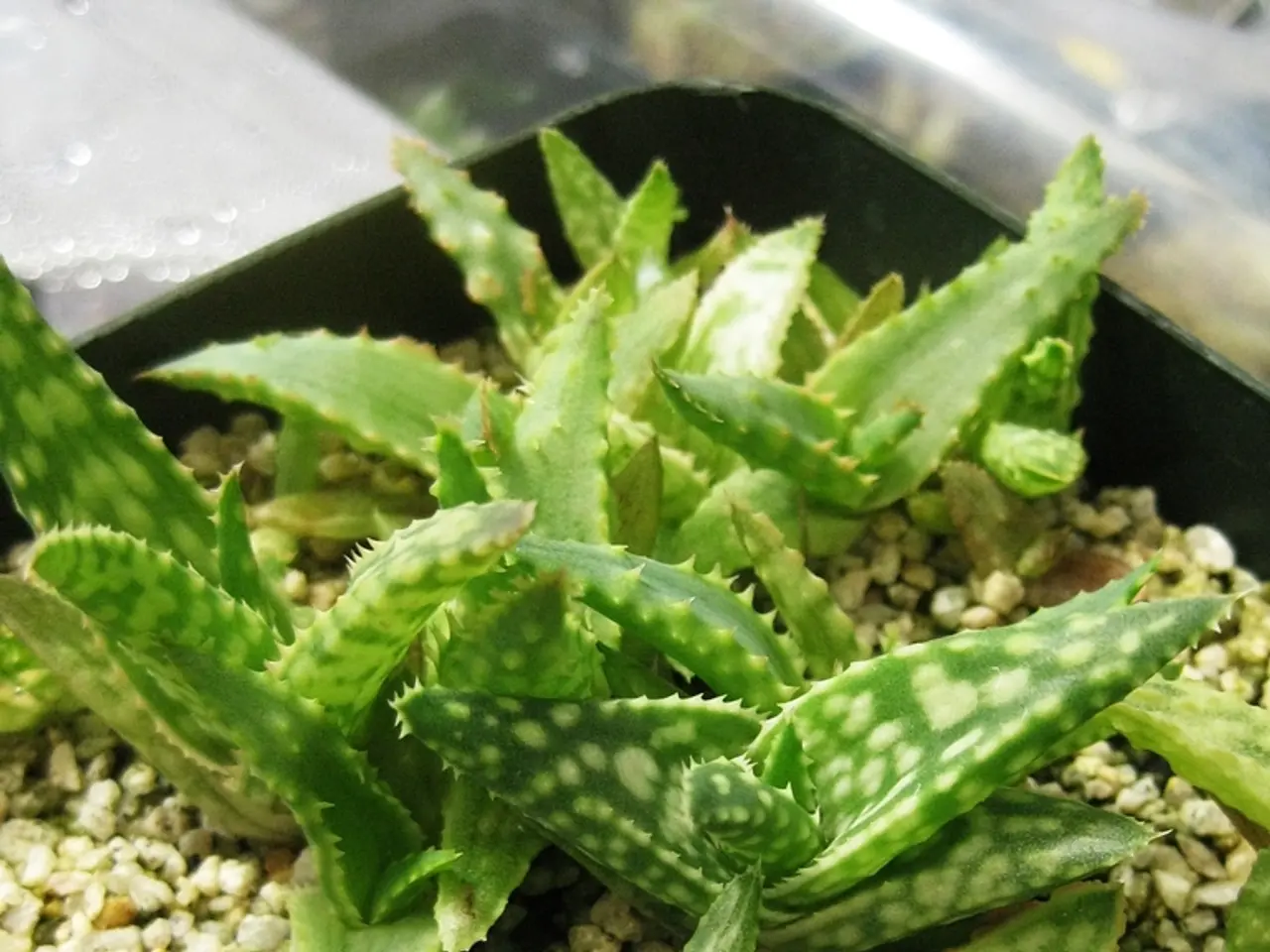Signs of Overwatered and Underwatered Aloes in Gardening, with Corresponding Remedies
Aloe plants, known for their succulent leaves and medicinal properties, are a popular choice for many gardeners. However, these plants can be finicky when it comes to watering, with common issues like yellowing leaves, mushy textures, or brittle roots often arising due to improper watering.
With over 15 years of experience in garden maintenance, design, and landscaping services, Glen, a renowned gardening expert, offers valuable insights into aloe plant care. According to Glen, the key to maintaining healthy aloe plants lies in maintaining a balance in watering and using a gritty, quickly-draining potting mix.
Overwatering: The Hidden Danger
Overwatering is the most frequent and dangerous problem for aloe plants. It leads to root rot, a fungal disease that is often irreversible. Early signs of overwatering include soft, mushy, or waterlogged leaves that may turn pale, yellow, or develop brown/black spots at the base. The soil remains consistently moist or wet, sometimes emitting a moldy smell. Leaves may become squishy, collapse, or fall off easily. Overwatering also causes yellowing, mushy, or collapsing leaves due to deprived oxygen in the roots.
To prevent this, water your aloe plant only when the top 2–3 inches of soil are fully dry. Use pots with drainage holes, and never let the pot sit in standing water. In cooler months, reduce watering frequency further since aloe’s water needs decrease.
Underwatering: The Silent Killer
Underwatering, on the other hand, causes thinner, wrinkled, wrinkly, or puckered leaves that may curl inward, with brown tips. Growth slows, and leaves can become dry and brittle, signaling thirst. To avoid underwatering, ensure watering is deep but infrequent, letting soil dry completely between sessions.
Addressing the Issues
For overwatered aloe plants, stop watering and allow the soil to dry thoroughly. If root rot is suspected, repot in fresh, well-draining soil. Ensure the pot has drainage holes, and remove any standing water.
For underwatered plants, increase watering frequency slightly, ensuring deep watering so moisture reaches the roots. Monitor soil dryness by inserting a finger 2 inches deep. Water in the morning to allow excess moisture to evaporate.
In conclusion, aloe plants thrive with infrequent deep watering, well-draining soil, bright indirect light, and pots that permit good drainage. Avoid frequent watering or letting soil remain wet, and watch leaves carefully for early signs to adjust care accordingly. A strategic watering schedule, the right potting mix, and vigilance can help keep aloe plants healthy.
[1] Latest posts by Glen include "Garden Fungicides: Essential Tips for Disease-Free Plants", "When to Pick Candy Cane Peppers: Optimal Harvest Time Guide", and "When to Pick My Watermelon: A Gardener's Guide".
[2] For more information, refer to Glen's articles on aloe plant care.
[3] Excess moisture in aloe plant soil fosters conditions for fungal diseases.
[4] Underwatering can cause brittle, shriveled leaves to curl inwards.
[5] Excess moisture can cause root rot to soften aloe plant roots.
- Glen's latest article, "Garden Fungicides: Essential Tips for Disease-Free Plants," offers valuable advice for preventing fungal diseases in aloe plants, which thrive best in a gritty, well-draining potting mix and with infrequent deep watering.
- To maintain a balanced lifestyle and create a healthy home-and-garden, it's essential to practice proper gardening techniques, such as watering aloe plants only when the top 2–3 inches of soil are dry to avoid issues like overwatering and underwatering, which can lead to brittle, shriveled, or soft, mushy leaves.




